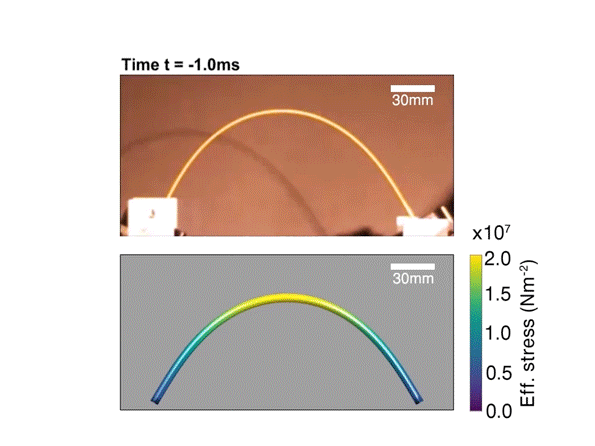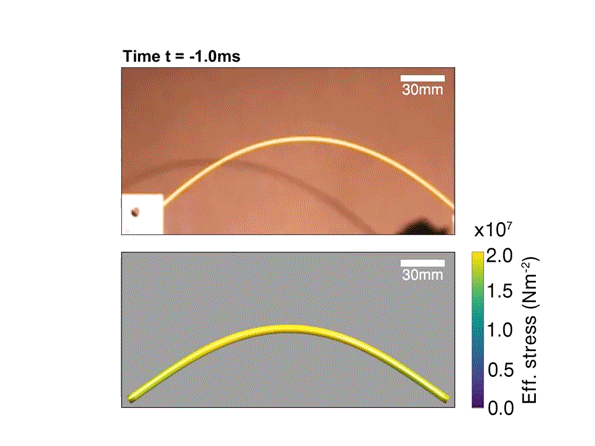With little fanfare this week, science revealed the answer to a mystery of life that has bedeviled humankind: Why on earth can’t you break a handful of spaghetti in half without it splintering into multiple pieces?
Physicist Richard Feynman once spent an entire night in the kitchen trying to figure it out without success.
Now, the Massachusetts Institute of Technology reports in a news release: eureka!
Physicists from France figure out why in 2005 when their study revealed that, again according to MIT, “when a stick is bent evenly from both ends, it will break near the center, where it is most curved. This initial break triggers a ‘snap-back’ effect and a bending wave, or vibration, that further fractures the stick.
Observe.

What to do about it is the mystery solved this week with publication of a paper that reveals that when you bend the spaghetti, you also have to twist it.
In other words: as a great scientist once revealed: it’s all in the wrist.

Two students built a device to simultaneously bend and twist a stick of spaghetti, according to the news release.
Vishal Patil developed a mathematical model, based on the work of the French physicists and the results of the machine developed by his co-authors.
From his model, he found that, if a 10-inch-long spaghetti stick is first twisted by about 270 degrees and then bent, it will snap in two, mainly due to two effects. The snap-back, in which the stick will spring back in the opposite direction from which it was bent, is weakened in the presence of twist. And, the twist-back, where the stick will essentially unwind to its original straightened configuration, releases energy from the rod, preventing additional fractures.
“Once it breaks, you still have a snap-back because the rod wants to be straight,” Dunkel explains. “But it also doesn’t want to be twisted.”
Just as the snap-back will create a bending wave, in which the stick will wobble back and forth, the unwinding generates a “twist wave,” where the stick essentially corkscrews back and forth until it comes to rest. The twist wave travels faster than the bending wave, dissipating energy so that additional critical stress accumulations, which might cause subsequent fractures, do not occur.
“That’s why you never get this second break when you twist hard enough,” [co-author Jörn Dunkel, associate professor of physical applied mathematics at MIT] says.
Got that? Good. We know what you’re thinking. “So what?”
“Taken together, our experiments and theoretical results advance the general understanding of how twist affects fracture cascades,” Dunkel says.
The results could help engineers figure out how to prevent cracks from forming in other rod-like structures.
